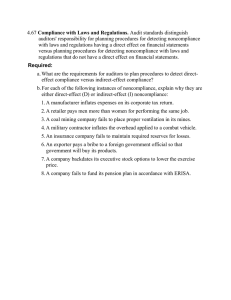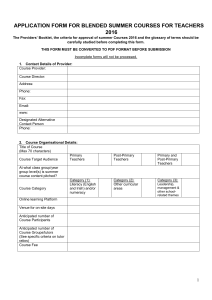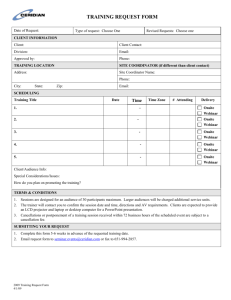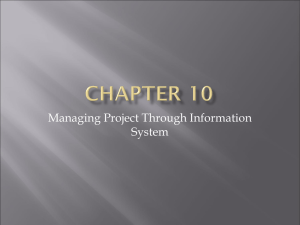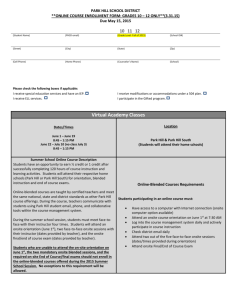Instructions
advertisement
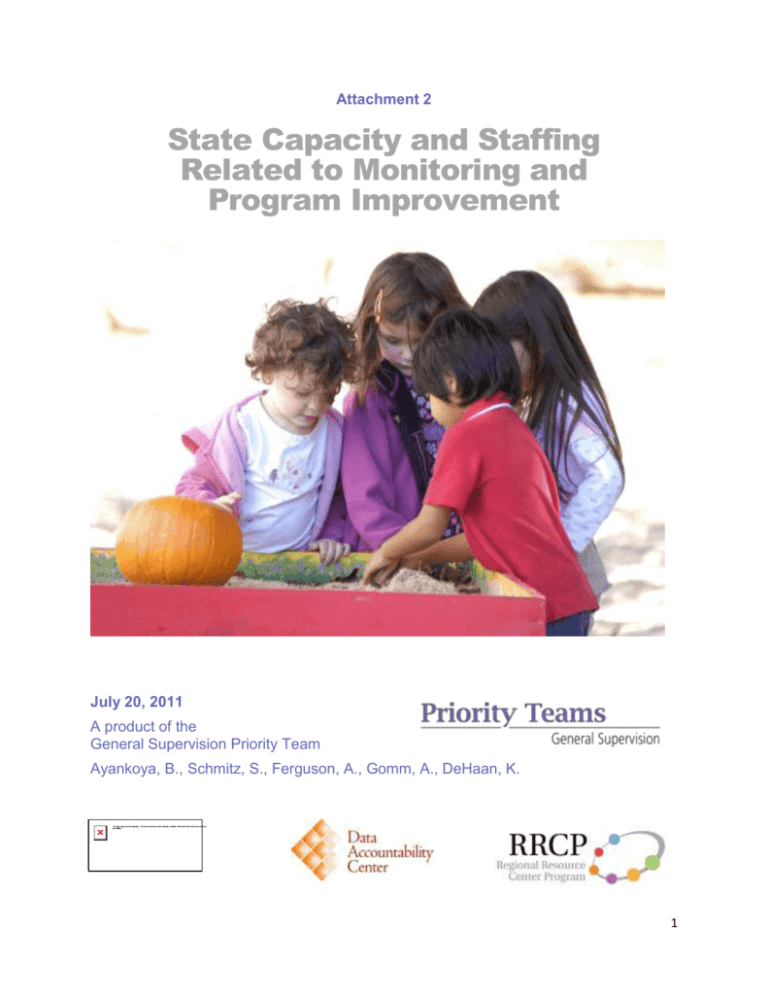
Attachment 2 State Capacity and Staffing Related to Monitoring and Program Improvement July 20, 2011 A product of the General Supervision Priority Team Ayankoya, B., Schmitz, S., Ferguson, A., Gomm, A., DeHaan, K. 1 Instructions: State Capacity and Staffing Related to Monitoring and Program Improvement When designing general supervision system activities for program improvement, it is recommended that states assess capacity to carry out integrated onsite/offsite monitoring activities. States might describe activities according to the level of effort required for implementation. Some activities will require minimal effort on the part of staff conducting the activities and can involve participation of everyone, while others requiring a great deal of effort and comparable staff/fiscal resources should be reserved for the few with the most critical needs. Few Some Least effort Everybody Capacity required Most effort In the pyramid above, activities that everyone gets should take the least amount of effort and therefore the least amount of capacity. These activities are a simple form of monitoring and would not need to have a lot of involvement from monitoring staff because everyone is doing the same thing. Activities in this category would most likely be used for the compliance indicators where the data system has the capability to collect data from everyone. Additional factors to consider include the size of the state’s population, who is being monitored, and the states’ service delivery system. The next levels of effort, requiring more capacity, might involve a self assessment process, desk audits, onsite visits, and additional data analysis. It is important that decisions about the monitoring methods used be based on maximizing resources. CONSIDERATIONS AT THE STATE LEVEL Federal Requirements: What do we have to do? APR indicators Broad compliance with related requirements 2 Data verification Process for correcting noncompliance and verifying correction of non compliance w/in 1 year of identification Public reporting Status determinations Complaints and Due Process Critical Questions What do we have to do? What are we required to do? What do we want to do? Review current monitoring activities o What methods are used? o What is included, i.e. what is being monitored? What additional monitoring indicators from related or state requirements do we want to consider? As we look at specific indicators – how could we gather this data? What could we monitor without going onsite? How many state staff do we need to carry out these activities? How will we verify the correction of individual child noncompliance? How will we verify the correction of noncompliance using updated data? How will we support local agencies to correct noncompliance and improve results? What monitoring staff are available? What activities can we eliminate or change to make sure the staff needed matches our staff capacity? What would the monitoring tool look like? Important to consider design and context at the same time. In what period or stretch of time should the onsite be conducted? What are our fiscal resource requirements? INSTRUCTIONS for using tool 1. COMPLETE THE MATRIX OF CURRENT PRACTICE USING CRITICAL QUESTIONS ABOVE 2. REVIEW THE COMPLETED MATRIX WITH YOUR TEAMS AND DISCUSS HOW EFFICIENT AND HOW EFFECTIVE THE CURRENT PRACTICES ARE 3. DESIGN/IDENTIFY POTENTIAL CHANGES 4. CREATE IMPLEMENTATION PLAN – WHAT WOULD IT TAKE TO DO IT a. WHAT YOU MUST DO? b. CAPACITY c. TIMING d. OTHER RESOURCES 3
